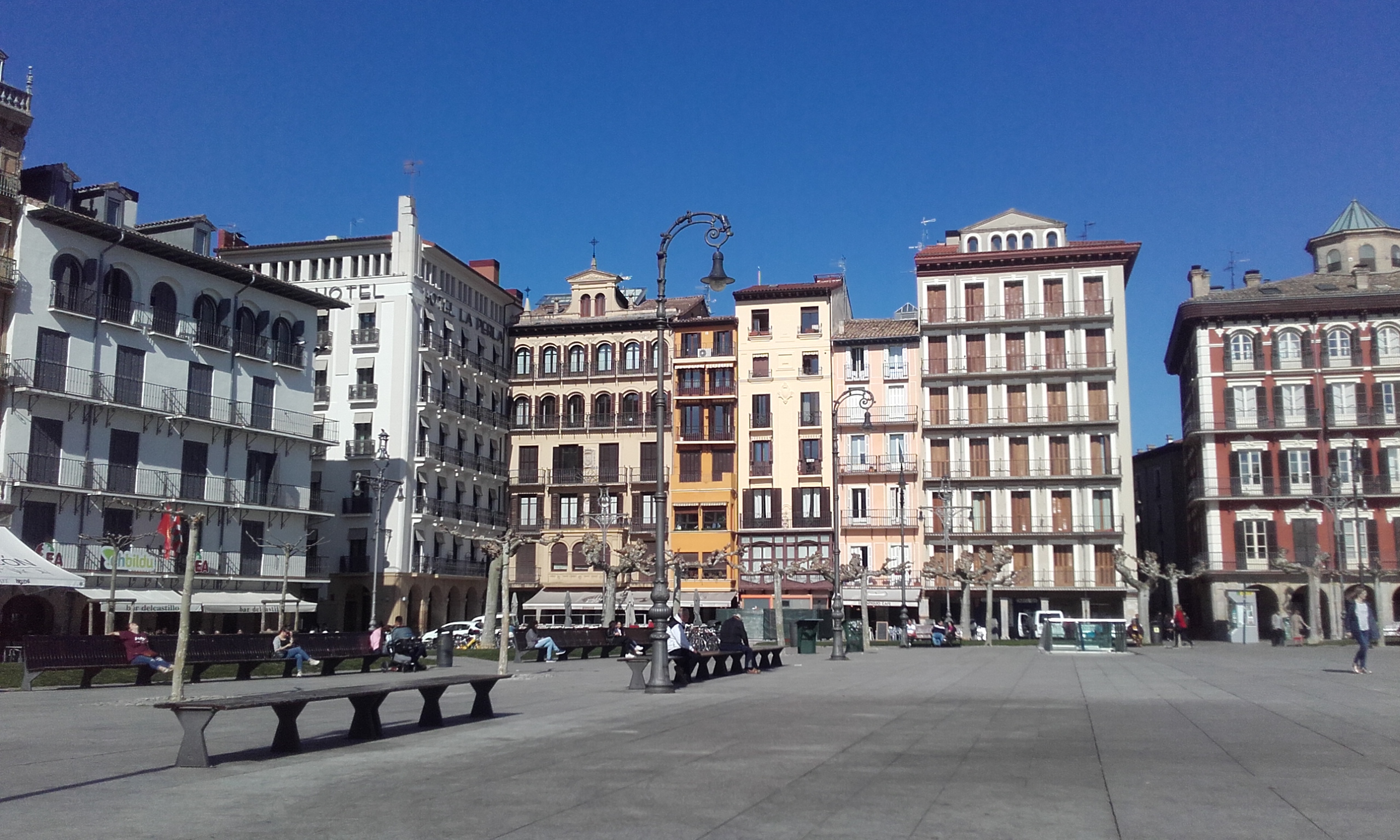Last updated September 2022
Like most people, I had only heard of Pamplona in relation to the crazy bull festival, Festival de San Fermín. And of course, in relation to Ernest Hemingway, the American writer whose favourite place in Spain was Pamplona and who set his arguably most famous novel, Fiesta: The Sun Also Rises in Pamplona.
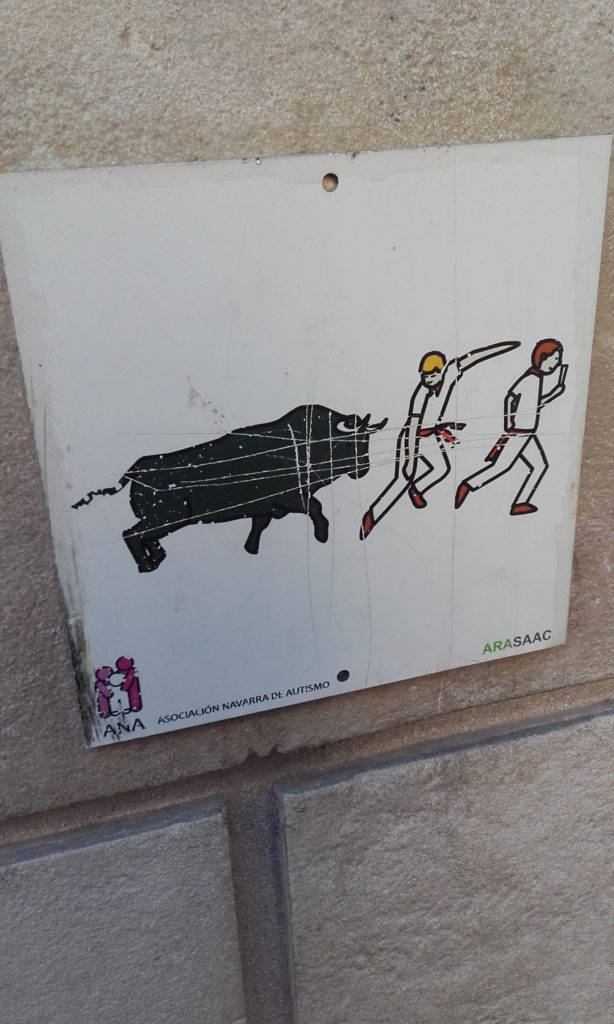
I decided to go on a day-trip mostly because of Hemingway; as an English Literature graduate I feel there are some places that I really must visit. I also wanted to go as Pamplona is the capital of the autonomous region on Navarre (Navarra) so I thought it would be interesting to see it and to compare it to some other capitals, chiefly, Logroño and Santander. I will write about Navarre more generally soon, to give it the attention it deserves but I will touch on some of its features this week.
Firstly, it is important to know that there is a strong influence from The Basque Country in parts of Navarre, especially in the northern area, and in Pamplona above all. What does this mean exactly? Well, for one thing, it means that the street names and information signs are in Basque first and Castilian Spanish second but don’t let it confuse you! It also means that Pamplona has two names, Pamplona is its name in Castilian Spanish and Iruña is its name in Euskadi/Basque/Vasco. I think it is fascinating that there is a such a mix of languages and culture in this area of Spain, I never knew this before starting to explore these northern regions.
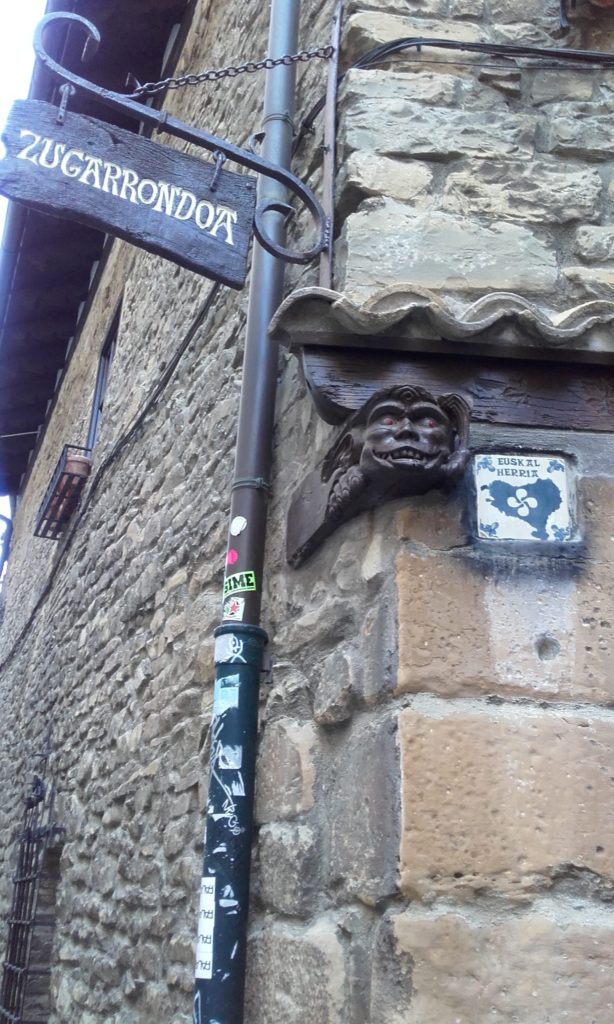
Now let us focus on Pamplona itself and its main attractions and sights. I was only there for a day, and not even a full day, really only a few hours. Still, I saw a lot so I would recommend it as an ideal city for a day-trip. Of course, there is enough to see and do to keep you busy for longer, especially if you decide to explore other parts of Navarre or to dip into the neighbouring autonomous regions of La Rioja and The Basque Country.
I took the bus to Pamplona which meant that the bus left me at the station which is a little outside the Old Town, beside the Ciudadela, an impressive stone fortress. I decided to leave exploring the fortress to the end of my day and headed straight to the Old Town instead. I started my day at Los Jardines de la Taconera, a beautiful park that is partly on the Old City Walls. In addition to its beautifully planted walkways, it has a number of animals, including deer! I knew that there were animals in the park but I didn’t know that there were deer. All the animals are in a sunken area of the park which means that you can look down on them and admire them.
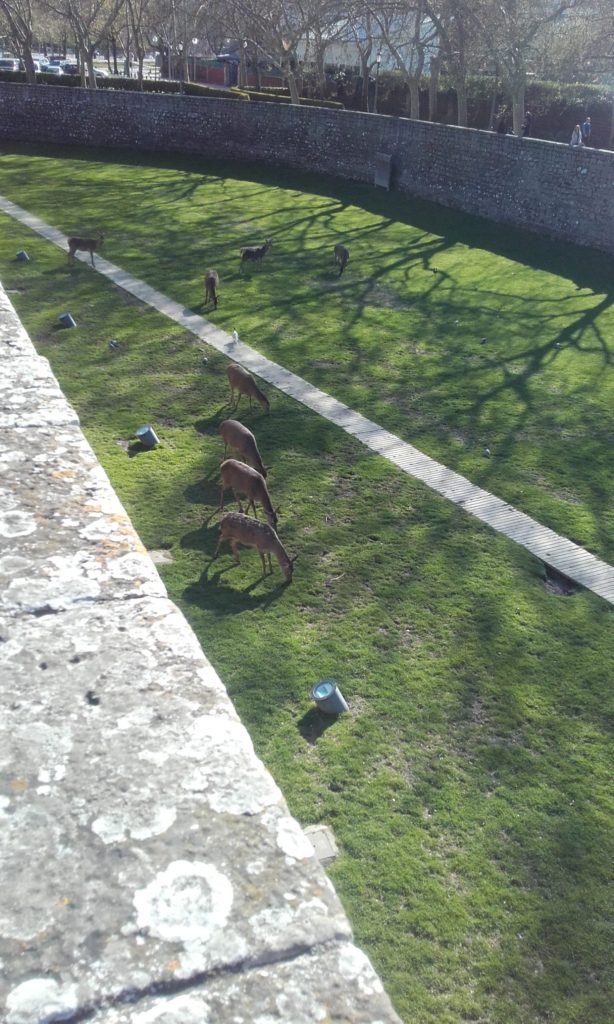
I then continued my day by exploring The Old Town (Casco Antiguo). It is very easy to walk around Pamplona, you don’t need to worry about trying to use the public transport. I walked out of the park onto Calle Mayor and then I followed this beautiful street to the Tourist Information Office which is conveniently located very close to the Town Hall (Ayuntamiento). I always go to a city’s Tourist Information Office as soon as possible after arriving as it means I can pick up a useful paper map as well as very useful flyers and brochures. My best finds in Tourist Information Offices were in Salamanca and Calahorra. In Salamanca, I picked up an incredibly useful list of all the attractions and their addresses, opening hours and websites as well as a free poster of the city! Calahorra, in La Rioja, yielded a booklet on Ernest Hemmingway and his time in Spain written in Castilian Spanish, Basque and English. So I would recommend always going to a Tourist Information Office as you never know what you will find in addition to a map and someone to answer your queries.
Next you must stop and admire the Town Hall. All cities and towns in Spain have a town hall, it is crucial to Spanish culture and identity. There is no one style of architecture for the town halls – the size, shape and architectural styles all vary hugely. This means that it is very interesting to make a point of seeing and admiring each one of them, then you can pick your favourites! Pamplona’s is undoubtedly one of my absolute favourites, I don’t know why exactly but probably due to its elegant shape and warm colours; it is beautiful. Do spend time sitting in this square and admiring it. I got a takeaway bocadillo in a nearby Jamónería and ate it in the sun while looking at the hall.
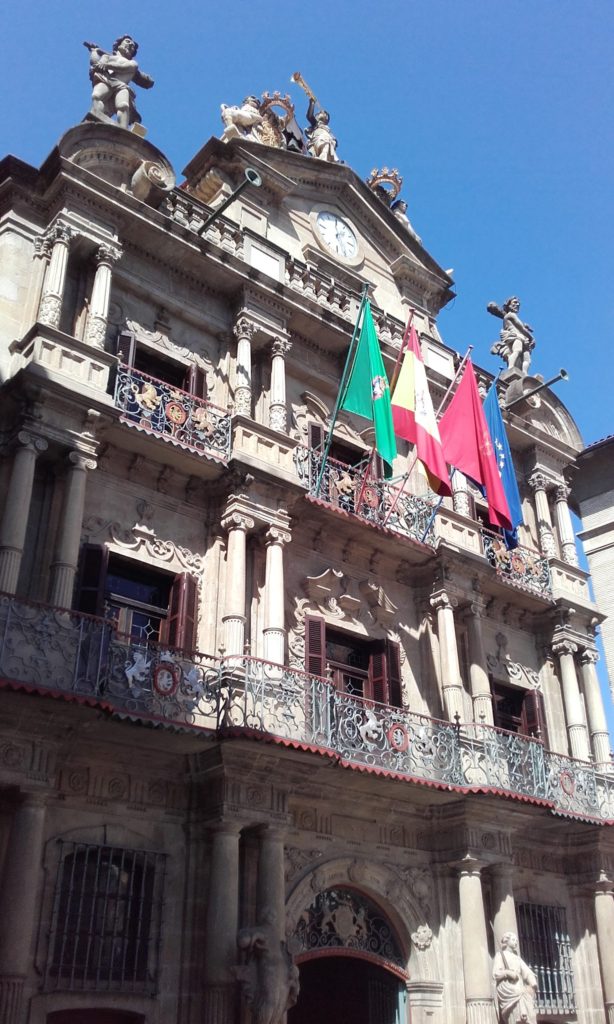
Next walk to the Cathedral (Catedral de Santa María la Real). The cathedral is in the Gothic style and is part of the Camino de Santiago which means that you will probably see a few pilgrims when you are there. I saw quite a few and I even saw one getting a stamp in his book! The cathedral itself is big and impressive and it has a very pretty cloister.
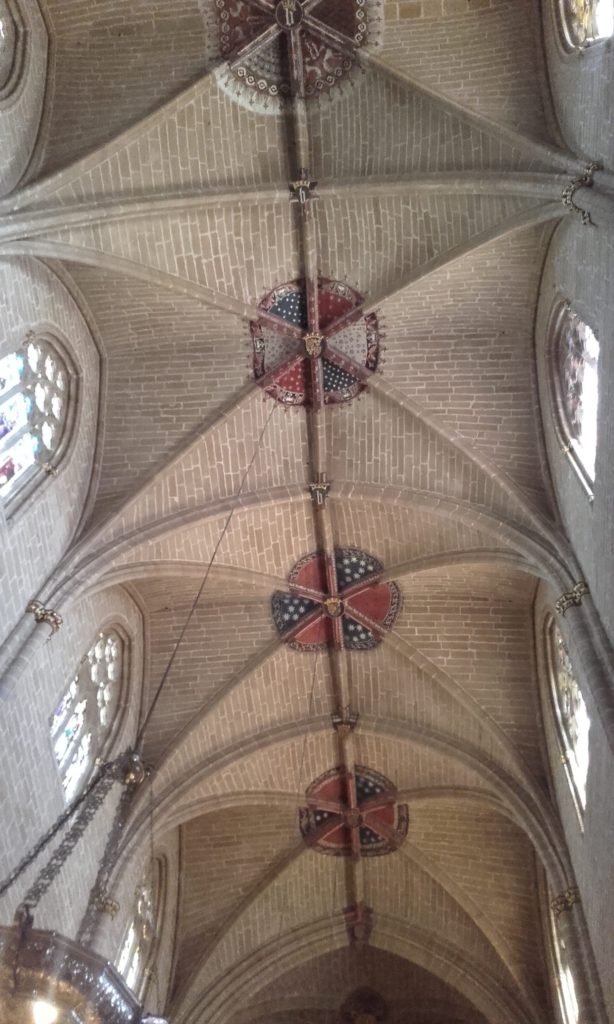
Next walk to the Plaza de Toros to admire its unusual architecture and to pay a little homage to Hemingway. But first, we will stop on the Old City Walls. The bullring is high, it is on part of the city wall so it means that if you exert yourself a little bit you will see both the bullring and the wall which is pretty good going. I can’t stress enough how easy it is to walk around Pamplona, how close everything is in the Old Town. You don’t need to follow my route, you can just follow your feet, choosing whatever streets you like and you will see all you wish.
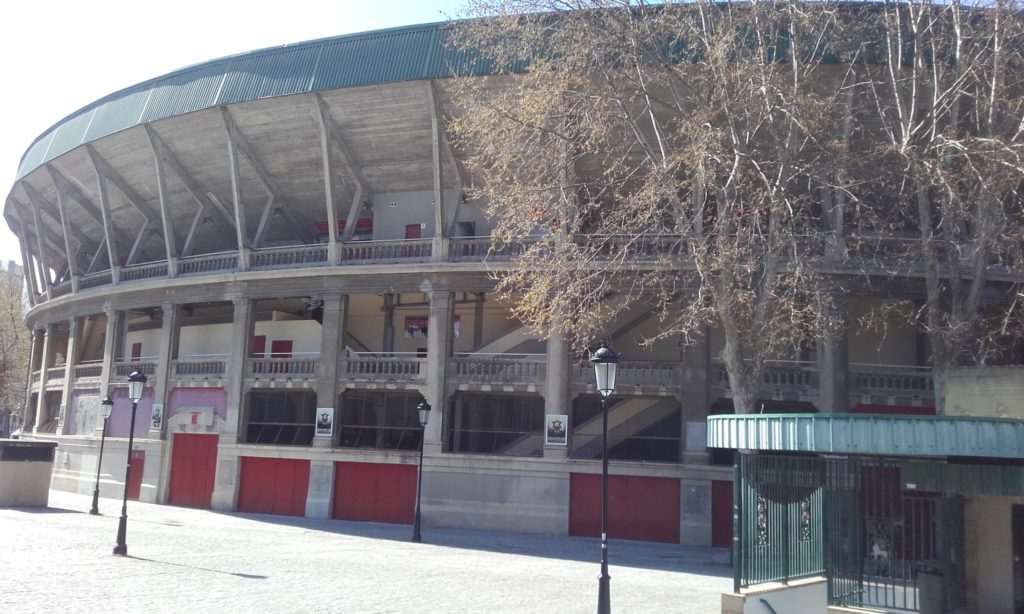
And now, back to Hemingway, you will need to see the bust of him. And the street named after him, Paseo de Hemingway. Hemingway truly loved Pamplona and once said that he could not do enough for the city, that he could never do more for it than it had already done for him. I think it is wonderful that Hemingway is still very much remembered in the city.

Very close to these reminders of Hemingway is the famous sculpture of the bulls running through the streets, a constant reminder of Pamplona’s main claim to fame: its Festival de San Fermín. As I have previously mentioned and will mention again, each town and city in Spain has its own saint or two and they hold festivals twice a year to celebrate them, usually including bulls. This is not unique to Pamplona and yet it is Pamplona that has this reputation, probably largely due to Hemingway’s writings. The sculpture is called Monumento al Encierro.
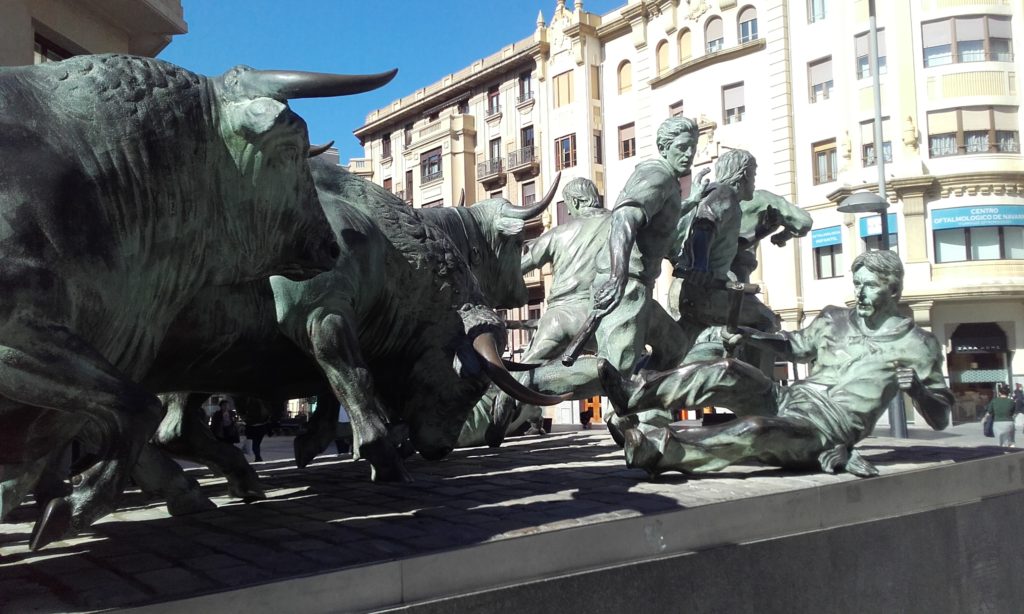
Now we will dip back into the Old Town and wander the streets, making sure to stop in the famous plaza, Plaza del Castillo. This is the centre for the festivals and it a place where people meet and watch the world go by. There is a very famous café here too called Café Iruña, Hemingway even went here back in the day.

Next we will just explore the charming streets and squares, making sure to stop and admire its library which is housed in a stunning Modernist building.
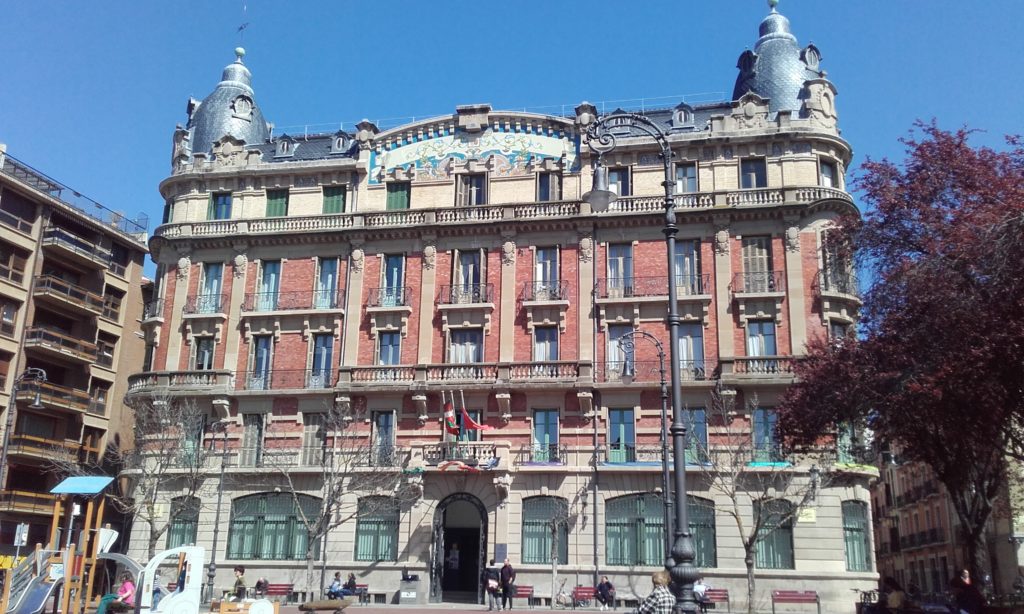
Now we will head to Ciudadela, the stone fortress, before heading home from the bus station. The Cuidadela shows the city’s Roman influence. After all, the city takes its name from the famous Roman general, Pompey. I am very surprised I did not know this before I visited as I studied Greek and Roman history for years. Still, it’s clear to me now that Pamplona has a lot of history to offer.
Explore this area and relax until it is time for your bus home.
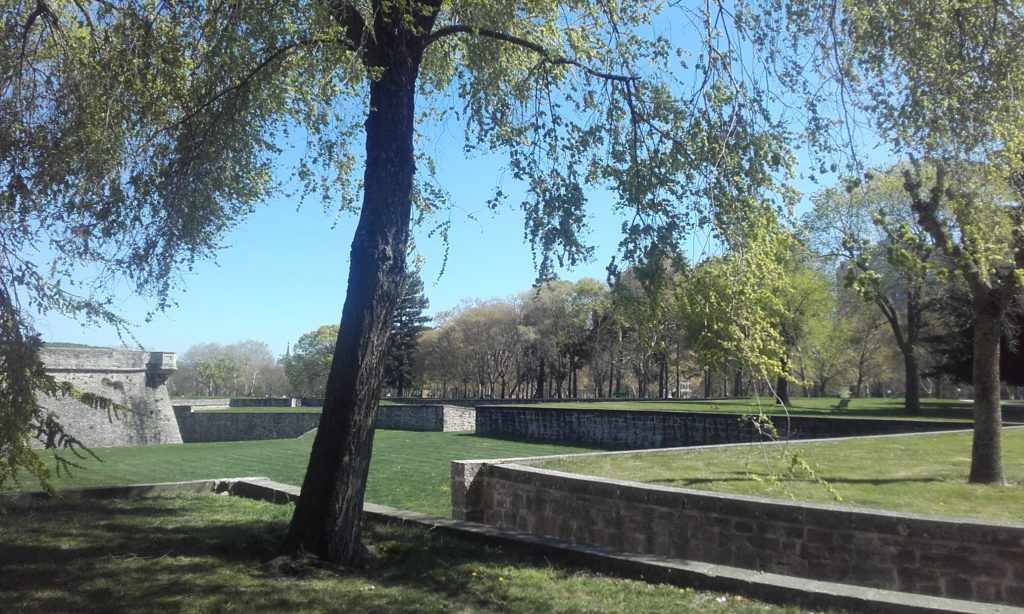
Pamplona is, for me, City of Walls due to both its impressive Old City Walls and this large fortress.
I hope this post helps you see that there is really no shortage of things to see and do in Pamplona!
